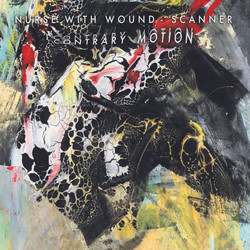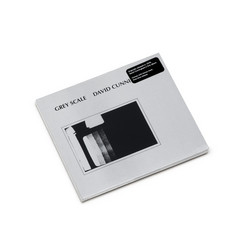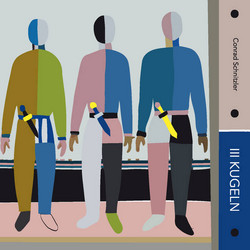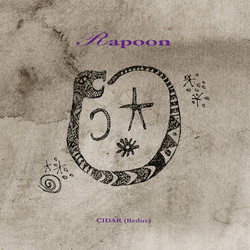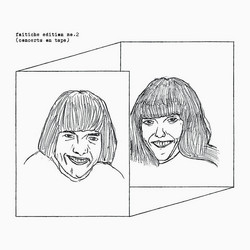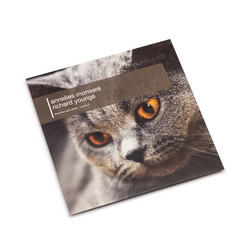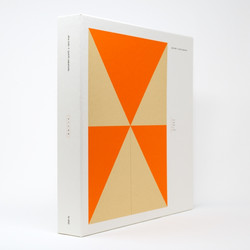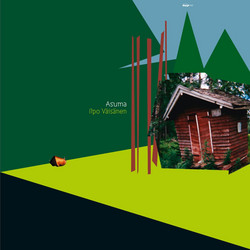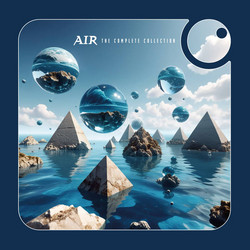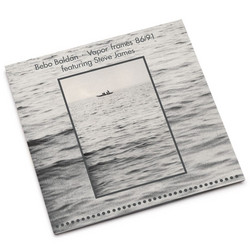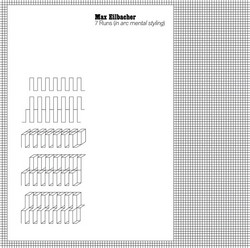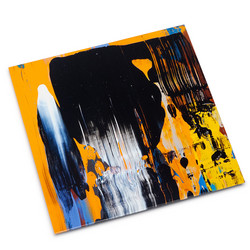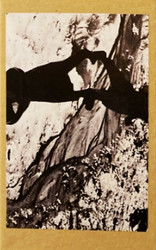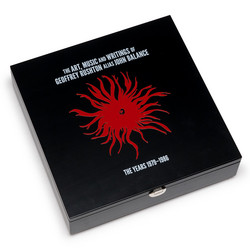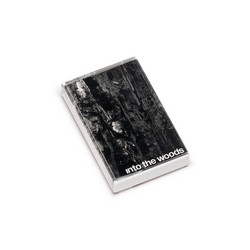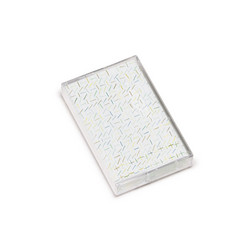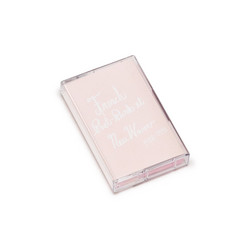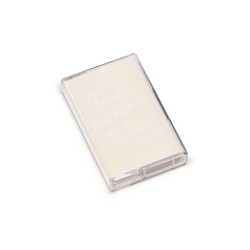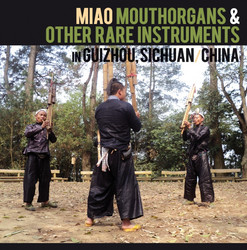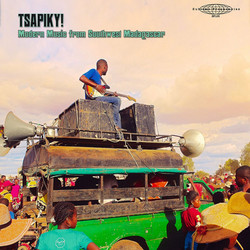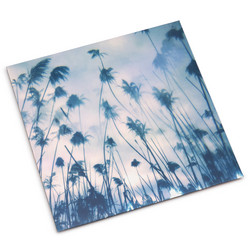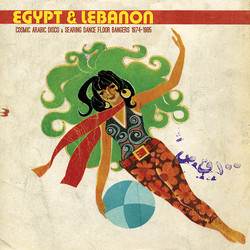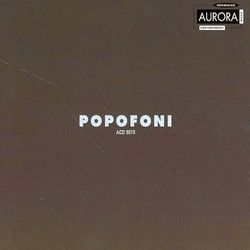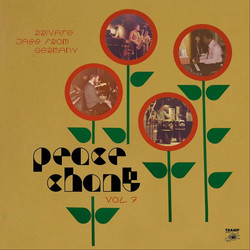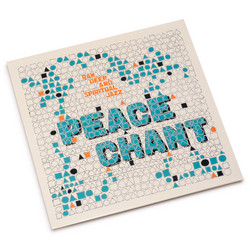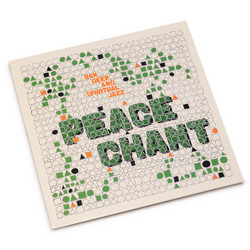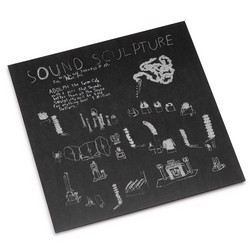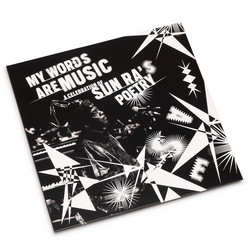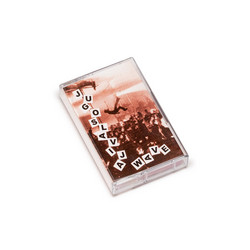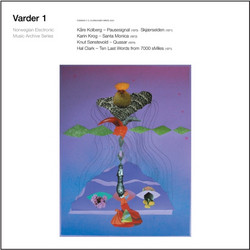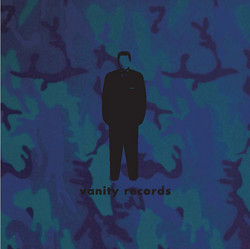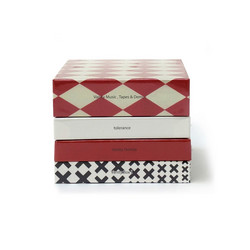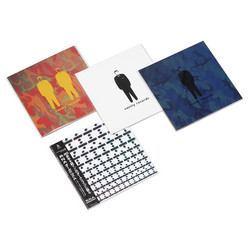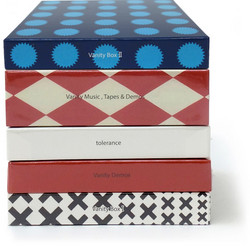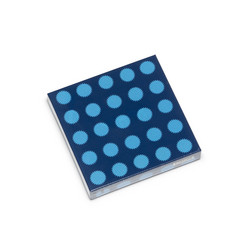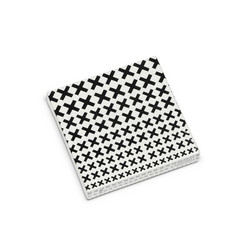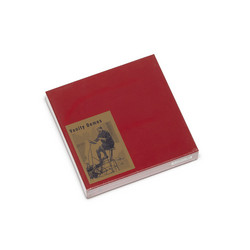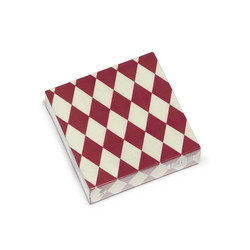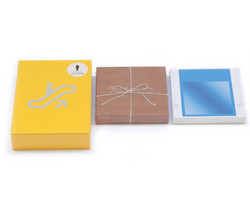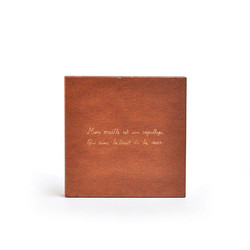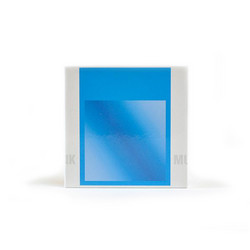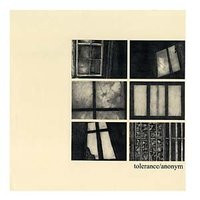Various
Vanity Box - Music Is Up and Down (11CD Box)
**500 copies** The Vanity Records box sets present a comprehensive anthology of releases by legendary Japanese DIY label Vanity, active in the late 70s and early 80s. It was conceived by Studio Warp, in collaboration with Agi Yuzuru and the whole roster of artists involved with Vanity. Eight years in the making, the limited edition project is finally seeing the light of day on October 21st 2019, with distribution duties handled by Kyou Records in Japan and WRWTFWW Records in the rest of the world.
Vanity Records - Music Is Up and Down is a 11-CD box set that compiles all full length albums and 7" singles that were originally released by Vanity Records from 1978 to 1981. All material included in this box set was sourced from the original master tapes and has been digitally remastered. When discussing the history of the early days of the late ‘70s Japanese indie music scene, there is one label from Osaka that cannot be omitted. This influential label was called Vanity and was launched in 1978 by the late Yuzuru Agi (he passed away in 2018) who was then the editor in chief of an equally influential Japanese music magazine called Rock Magazine. In the late ‘70s, the enigmatic and forward-looking Agi was a maverick in Japan. Savvy enough to foresee the emerging UK/US punk movement and the sudden rise of a vast array of indie labels emerging from this scene around the world, he decided to start a label with a similar ethos. He established Vanity in parallel to his work at Rock Magazine and followed a creative direction reminiscent of his editorial policy, releasing alternative and cutting edge projects that included electronic and post punk styled experimental music. Until its hiatus in 1982, Vanity issued a total of eleven LPs, three 7 inch singles, twelve sonosheets (flexi discs) and six cassette tapes in the course of four years. Apart from the sonosheets that were supplements in Rock Magazine, all Vanity releases were extremely limited. Vinyls were pressed in quantities of 300 to 500 units, and cassette tapes editions were even smaller (always under 100), so arguably only a handful of people heard Vanity titles in their entirety. Compared with other labels active during the same era, the Vanity catalog showcases an astonishing array of radical and cutting-edge works, which has resulted in critical acclaim and full-on cult status. With the advent of the internet, a new audience has discovered the existence of Vanity Records, making it one of the most sought-after labels with a sky high demand for reissues.
Contains 13 titles originally released on Vanity Records which are included on 11 CDs were completely remastered from the original master tapes. Discs come in paper sleeve with a replica of the original album jacket and they are housed inside a 195 mm x 140 mm x 43mm box (250 copies in pink box, 250 copies in yellow box). All copies includes a Vanity Records logo sticker and a 32-page booklet full of never seen archival material.
CD-1 Tolerance - Anonym
(Vanity 0004, originally released in 1979)
Tolerance is a solo alias of Junko Tange from Tokyo. Its sound is made of Tange’s electric piano, synthesizer, and simple electronics playing alongside the whispering of her poetry and the noisy slide guitar sounds of Masami Yoshikawa. The combination of of Yoshikawa’s slow guitar playing and Tange’s parts swirls into a haunting, monotone abstract sounding animus.
The album cover was created by Toshimi Kamiya who published a photo book called Tokyo Kitan. Worth noting that the distinguished English experimental/collage music artist Steve Stapleton (Nurse With Wound) took the title of his 1980 album To The Quiet Men From A Tiny Girl from the credits of Anonym. Stapleton also had Tolerance’s name in a list of artists he was influenced by called the NWW List.
CD-2 Tolerance - Divin
(Vanity 0012, originally released in 1981)
Divin is Junko Tange and Masami Yoshikawa’s second album as Tolerance. The title means God in French. For this album, the heavily featured guitar sound of their debut was toned down, while the vibrancy of the drum machine and the cadence of the electronics were emphasized, and a subtle color saturation was added to create a captivating sound atmosphere. In the track "T-5" they use a poem by Michio Kadotani (Kussata Telepathy’s) from his book Bokuwa Zurui Roboto (I am cunning robot). This album was mixed by Tomoaki Omari (Bushman-19). Between releasing their first and second album, they also produced a one-sided sonosheet, that was released as a supplement for Rock Magazine, and contained the unreleased track "Today’s Thrill", not included in either of their albums. Listening to the track now, it definitely stood the test of time. Unfortunately, Tolerance’s activities ceased after the release of this album.
CD-3 Normal Brain - Lady Maid
(Vanity 0009, originally released in 1980)
Normal Brain is a group formed by Yukio Fujimoto who, from a young age, started playing around with tape recorders, cameras and film projectors, and then went on to study electronic music at the Industrial Music Department of Osaka University of Arts. By connecting analog synthesizers, rhythm machines, Speak & Spell study toys, and English language learning tapes, and using each instruments’ intuitive simplicity and quality, he conceived witty and intellectual music. The album title is a typical Marcel Duchamp inspired pun by Fujimoto. In the mid 80s, Fujimoto gave up making traditional electronic music and, as an contemporary artist, started producing various sound objects and installations that evoke auditory, visual, olfactory and tactile perception hidden in daily life. In 2001 and 2007, he exhibited his works at the Venice Biennale. He has also held simultaneous solo exhibitions at The National Museum of Art in Osaka, Omani Memorial Art Museum in Nishinomiya City, and The Museum of Modern Art in Wakayama, received high acclaim both domestically and abroad.
CD-4 Sympathy Nervous - Sympathy Nervous
(Vanity 0007, originally released in 1980)
Boasting a high quality programming technology and acoustic design capabilities, Sympathy Nervous is a proto-techno unit led by Yoshihumi Niinuma who made full use of a self-built computer system that he named U.C.G. On top of that, Tatsuya Chiba’s noise guitar worked as an effective accent to their overall countercurrent and industrial-influenced signature sound. Their album artwork was designed by German painter / photographer Achim Dechow, famed for his design of the La Düsseldorf logo. He was a regular contributor of Rock Magazine, designing their front cover images. After releasing his debut album, Niinuma left Tokyo and went back to his hometown. There, while working as a programmer, he steadily continued to record his own music. During the 1990s, he made forays into the techno scene, signing a deal with Belgian label K.K. and from then on, fully returned to his musical activities. In 2000, he established a domestic theremin atelier in Miyako-shi (Iwate Prefecture) but lost it, along with all his fortune, in the earthquake of March 2011. The U.S. label Minimal Wave produced 2 charity albums that compiled his past recordings to assist Niinuma financially. Niinuma passed away in 2014.
CD-5 A compilation of 7" singles
Sympathy Nervous - Polaroid
VA-S1, originally released in 1980)
The vocoder-sung track on Side A is so catchy you can picture it being in a TV commercial jingle for Polaroid cameras. The three tracks from this 7 inch were not included in the self-titled Sympathy Nervous album.
Mad Tea Party- Hide and Seek
(VA-S2, originally released in 1980)
Mad Tea Party is a female trio lead by Kiyomi Shiraishi who was a regular at legendary clubs like Kichijoji Minor and Ylem. They created edgy and cute post-punk pop with a lot of dub effects and reverse tape playing.
Perfect Mother ‒ You’ ll No So Wit
(VA-S3, originally released in 1980)
A leftfield electronic pop group led by Masahiro Ueda, the organizer of the Tokyo based music / art group, Ylem. One member of this group was Fumihiro Nonomura who joined Harumi Yamazaki-led group Taco afterwards and once became a popular figure as one of the "new breed of Japanese” artists.
CD-6 R.N.A. Organism - R.N.A. Organism Meets P.O.P.O.
(Vanity 0006, originally released in 1980)
This is the only album by the anonymous unit, R.N.A. Organism. This album is based on a cassette tape which was airmailed from London. It also happens to be the first group produced by Kaoru Sato of EP-4. R.N.A. Organism is a 3 piece unit formed in 1978 and featuring 0123, Chance and Tetsu who played around with home recordings as well as studio live recordings. Tetsu left in 1979 and was replaced by Zero. This album was produced at this time, showcasing super-cheap, alt-dub created with a range of instruments and gadgets such as a rhythm box, guitar, synths and voice. The minimal design of the album cover featuring standard lettering sheet also made an impact. Although uncredited, Kaoru Sato produced the music. Their live performances were unique, in the sense that they would perform "live" in the studio and then send a cassette recording of the resulting sound to the venue. R.N.A. Organism is also included in the compilation "Awa" (1981) and TACO’s first album, “Taco" (1983).
CD-7 BGM - Back Ground Music
(Vanity 0008, originally released in 1980)
Back Ground Music is an album that Takayuki Shiraishi created when he was a 17 year old high school student. Wanting to realize his musical vision at the time, he invited his old friend, Harunobu Kawashima plus others, and travelled from Tokyo to Osaka to record this piece in just one day. BGM is a precocious, teenage experimental studio unit that mixed the essence of post punk, funk, disco beats, dub, and industrial music. The band never performed live. Kawashima, whose bass lines were void of any futility, later became a member of the group Der Zibet. After releasing this album, Shiraishi went on to learn the art of self-production and recording techniques, forming a duo with Jun Sonohara called MLD and Tristan Disco, and producing and releasing a few singles. Having discovered Detroit techno in the late 80s, he then shifted toward techno / club music scene and released solo works on many labels, domestically and abroad. He is still currently active producing music with a flexible musical palettes ranging from techno to house, breakbeats and ambient music.
CD-8 Agata Morio - Norimonozukan
(Vanity 0005, originally released in 1980)
After he had debuted as a folk singer with a smash hit single called "Akairo Elergy" in 1972, Norimonozukan (Encyclopedia of Automobiles) came as a landmark album for Agata, with a techno-pop that bridged into his following music endeavors as the lead singer of the group, Virgin VS. Sab, Yukio Fujimoto (Normal Brain), Phew, Masahiro Kitada (INU), Jun Shinoda (SS, Continental Kids), Daiki Tomiie (Ultra Bide, Ainsof), Chie Mukai (East Bionic Symphony, Che-Shitzu), Takashi Yasuda (Kigadoumei) are among the artists who contributed to this album. Consisting of a rough recording made in just two days, it captures the encounter between Agata’s singing and the post punk / techno pop sound - the retro-futuristic tin-toy-dream-world envisioned by a 20th century boy. "Koi No Radio City" and "Submarine" are respectively Telex and Joy Division inspired tracks with different arrangements. "Airplane" is a collage track for which Agata looped the voice of Taruho Inagaki, a writer that he respects dearly.
CD-9 Aunt Sally - Aunt Sally
(Vanity 0003, originally released in 1979)
Along with INU, Ultra Bide, SS, Aunt Sally is a legendary group that represented the Kansai punk scene in this era. They were formed in June, 1978 and disbanded in October 1979. Featuring Phew’s literary lyrics and enchanting vocals intertwining with roughly cut but accurate playing, they projected an utterly inventive existence. This is a masterpiece that miraculously captures the splendor of a teenage band that were only active for a year. The front cover photo was taken by famed Japanese photographer, Masatoshi Sukita famous for taking iconic photos of Marc Bolan, David Bowie, YMO, etc. At the time, he was in charge of taking photos of front covers images of Rock Magazine as well.
CD-10 Sab - Crystallization
(Vanity 0002, originally released in 1978)
Crystallization was produced by multi-instrumentalist Sab who was just 19 year old at the time. Sab created this album by overdubbing many synthesizers, electronics and guitar parts separately, for the most part by himself. There were a few guest musicians who added sitar and flute parts. Like its title suggest, the album projects how a mineral crystallizes, defined by a hard and transparent, crystal-oscillating sound. While an after scent of psychedelic and progressive rock vibes looms, this is an album that also has a hint of an ambiguous age that pre-dates the emergence of meditational, new age music afterwards. It also brilliantly links with the recent new age revival and the rediscovery of Japanese ambient music by overseas music fans that is happening now. The album artwork is designed by painter Lounie Marino (Kousakusha and wife of Seigo Matsuoka) who draws dreamy pastel art pieces for covers of Taruho Inagaki’s books and more. Sab also shined as the chief arranger for Agata Morio’s album Norimonozukan, but after an encounter with Bhagwan Shree Rajneesh, he became his follower and moved to the US to become a disciple. His activities afterward remain unknown.
CD-11 Dada - Jyo
(Vanitu 0001, originally released in 1978)
Dada is an electronics and guitar duo formed in 1977 by Kenji Konishi of Kigadoumei (when Terutsugu Hirayama was a member) and guitarist Mutsuhiko Izumi of Karisma (when Kozo Suganuma was a member). Previously, they were both active in the Kansai hard rock / progressive rock scene from the mid 70s. While their original pieces are constructed in a more colourful and meticulous manner, for this project, Vanity label head Agi requested them to record an album that placed an emphasis on a more lyrical and peaceful demeanor, backed with a touch of improvisation. The artwork is an extraction of a scene from a scroll painting called Gakisoshi, a Heian era narrative story depicting the salvation of a Preta. This album is dedicated to Brian Eno who, at the time, was starting to advocate his concept of ambient music. Later on, Dada made their major debut release with King Records / Nexus in 1981. After the duo split, Konishi went on to form 4-D and also became a member of P-Model from 1994 to 2000. After being a member of the jazz rock band Kennedy, Izumi started working for the video game company Konami. He remains active as a game music producer, notably doing the tracks for video game, Guitadora.
